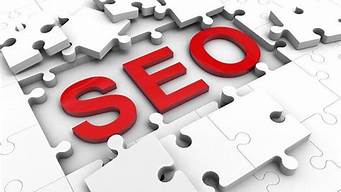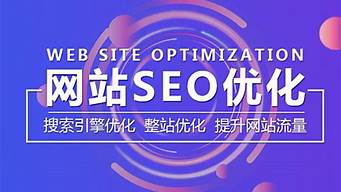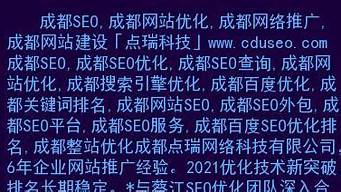您现在的位置是: 首页 > SEO优化 SEO优化
seoul英语
zmhk 2024-04-20 人已围观
简介seoul英语 对于seoul英语的问题,我有些许经验和知识储备。希望我的回答能够为您提供一些启示和帮助。1.韩国英语怎么说2.韩国首都英语介绍3.首尔是哪里4.首尔就是汉城吗5.韩国首尔这
对于seoul英语的问题,我有些许经验和知识储备。希望我的回答能够为您提供一些启示和帮助。
1.韩国英语怎么说
2.韩国首都英语介绍
3.首尔是哪里
4.首尔就是汉城吗
5.韩国首尔这个单词是来自英文soul么?
6.韩国的首都一直是首尔吗?那汉城是什么?

韩国英语怎么说
韩国的简称是Korea [k?'ri?]正式名称是大韩民国--Republic of Korea?
英文缩写是ROK?
South Korea是南韩或南朝鲜,是一种非正式的说法,在外交场合是错的。
Korean 韩国人、韩国的 ?[k?'ri?n]?
Seoul 首尔 ?[s?ul]
韩国(Korea),全称大韩民国(/大韩民国Daehan Minguk),简称韩国(/韩国 Hanguk),又称南韩、南朝鲜。成立于1948年8月15日,是位于东亚朝鲜半岛南部的共和国,国名来源于古代朝鲜半岛南部的三韩部落(辰韩、马韩、弁韩),英文名Korea源于古名“高丽”。韩国的行政首都是世宗,总统府和国会目前仍在首尔,韩国成为拥有两个首都的国家。
韩国首都英语介绍
日本Japan:东京Tokyo
韩国Korea:首尔Seoul
澳大利亚Australia:堪培拉Canberra
加拿大Canada:渥太华Ottawa
俄罗斯Russia:莫斯科Moscow
泰国Tailand:曼谷Bangkok
我也是查来的,应为这是我的作业!!
首尔是哪里
Seoul is in northwest South Korea. Seoul proper comprises 605.39 km? of area, roughly bisected into northern and southern halves by the Han River. The Han River and its surrounding area played an important role in Korean history. The Three Kingdoms of Korea strove to take control of this land, where the river was used as a trade route to China (via the Yellow Sea). However, the river is no longer actively used for navigation, because its estuary is located at the borders of the two Koreas, barred for entrance by any civilian. The city is bordered by eight mountains, as well as the more level lands of the Han River plain and western areas.
[edit] Climate
Climate chart for Seoul
J F M A M J J A S O N D
23
1
-7
25
3
-5
47
10
0
94
17
7
92
23
13
134
26
17
369
29
22
294
30
22
169
26
17
50
20
10
53
11
3
21
4
-4
average temperatures in °C
precipitation totals in mm
source: climate-charts.com
Imperial conversion[show]
J F M A M J J A S O N D
0.9
34
19
1
37
23
1.9
50
32
3.7
63
45
3.6
73
55
5.3
79
63
15
84
72
12
86
72
6.7
79
63
2
68
50
2.1
52
37
0.8
39
25
average temperatures in °F
precipitation totals in inches
In common with the rest of South Korea, Seoul has a humid continental climate (K?ppen climate classification Dwa), despite the fact that the country is surrounded on three sides by water.[12] Summers are generally hot and humid, with monsoons taking place from June until July. August, the hottest month, has an average temperature of 72 °F to 86 °F (22°C to 30°C) with higher temperatures possible. Winters are often very cold with an average January temperature of 19 °F to 33 °F (-7°C to 1°C) and are generally much drier than summers, although there are 28 days of snow in Seoul in each year on average.
[edit] Cityscape
Hyundai I'Park Tower.
View of the Samsung Tower Palace.
The traditional heart of Seoul is the old Joseon Dynasty city, which is now the downtown area, where most palaces, government offices, corporate headquarters, hotels, and traditional markets are located. This area occupies the valley of Cheonggyecheon, a stream that runs from west to east through the valley before emptying into the Han River. For many years, the stream had been covered by concrete, but was recently restored through an urban revival project. To the north of downtown is Bukhan Mountain, and to the south is the smaller Namsan. Further south are the old suburbs of Yongsan-gu and Mapo-gu, and the Han River. Across the Han River are the newer and wealthier areas of Gangnam-gu,Seocho-gu and surrounding neighborhoods. The World Trade Center of Korea is located in Gangnam-gu and this is where many expositions and conferences are held. Also in Gangnam-gu is the COEX Mall, a large indoor shopping and entertainment complex. Downstream from Gangnam-gu is Yeouido, a large island that is home to the National Assembly, major broadcasting studios, and a number of large office buildings, as well as the Korea Finance Building and the world's largest Pentecostal church. Adjacent to Yeouido is Bamseom an uninhabited island in the middle of the river. The Olympic Stadium, Olympic Park, and Lotte World are located in Songpa-gu, on the south side of the Han River, upstream from Gangnam-gu. South of the sprawling Gangnam area are Namhan Mountain,Cheonggye Mountain and Gwanak Mountain.
A dusky view overlooking the Gangnam District of Seoul.
Southern Seoul
Jongno Tower.
Major modern landmarks include the Korea Finance Building, N Seoul Tower, the World Trade Center, the 63 Building and the six-skyscraper residence Tower Palace. These and various high-rise office buildings, like the Seoul Star Tower and Jongno Tower, dominate the city's skyline. Due to its high density, Seoul has been equipped with a grand appearance of skyscrapers and the city council is now planning on building a series of high-rises, including 580-metre business center in Sangam Digital Media City district and an 800-metre Lotte World 2 Tower in the Jamsil (pronounced "Jam-shil") district of Songpa-gu and Gangdong-gu.
Urban and civil planning was a key concept when Seoul was first designed to serve as a capital in the late 14th century. The Royal Palaces of the Joseon Dynasty still remain in Seoul, with the main palace, Gyeongbokgung currently being restored to its original form. Today, there are eight major subway lines stretching for more than 250 kilometers, with a ninth and tenth line being planned, and also some other miscellaneous lines.
The most historically significant street in Seoul is Jongro, meaning "Bell Street," on which one can find Bosingak, a pavilion containing a large bell. The bell signaled the different times of the day and therefore controlled the four major gates to the city. The only time it is normally rung nowadays is at midnight on New Year's Eve, when it is rung thirty-three times. It was, however, rung on the day that President Kim Dae-jung took office.
Seoul's most important streetcar line ran along Jongno until it was replaced by Line 1 of the subway system in the early 1970s. Other notable streets in downtown Seoul include Euljiro (; 乙支路), Teheranno (路, Tehran Street), Sejongno (; 世宗路), Chungmuro (; 忠武路), Yulgongno (; 栗谷路), and Toegyero (; 退溪路).
Many people think Korean food is just like Chinese food. Others swear that it is the same as Japanese food. But neither of these are right.
There are definitely some similarities between Korean, Chinese and Japanese foods as a result of their close proximity and cultural interrelationships. All three cuisines use rice as the main dish and other foods are used as side dishes.
Korean food has developed over time to have its own unique and tasty characteristics. Grains of all kinds are highly valued and appear in many forms. Main dishes and and side dishes are all separate and distinctive from each other, and there is a large variety of different kinds of foods. Seasonings is considered an art and condiments and spices are used to obtain a harmonious blend of flavors.
Due to hundreds of years of Confucian influence, with its rigid rules of behavior, great value is put on the proper table setting, dining manners and courtesy.
Koreans fundamentally believe that all food is like medicine, doing good for the person who eats it. Many ingredients used in Oriental herbal medicine are also commonly used in Korean cooking. Koreans like to identify food that is particularly good for you by prefixing the name with "yak", meaning medicine, thus "yakgwa" (honey cookies) and "yakshik" (sweet rice).
There are many regional variations in Korean food due to geographic, cultural and climatic differences. Generally, the northern parts of Korea are more mountainous, suited for "dry field" grains other than rice, while the plains of the central and southern regions produce rice abundantly, making it a more important staple in these areas.
Although Seoul itself does not grow or produce any products, its position as the head of the country's government for the past
600 years, and as the center of the Choson Dynasty royal court for 500 years, gives it a reputation for luxurious and diverse cuisine.
Many of Seoul's distinctive dishes evolved from the cuisine of the royal court and the noble class. The cuisine of Seoul is beautifully made and served in small portions but with a large number of dishes.
The royal influence makes the meals highly formal, artistic and ceremonial.
In the northern areas, which have shorter summers and longer winters, food is more bland than in the South, the servings are generous, and many different dishes are served at a meal.
As you move southward, the food becomes spicier and saltier, with stronger flavors and more use of pickled fish and condiments.
Regional differences are beginning to blur as the foods of one region become widely known and and eaten in other regions of the country. And as Western influences enter the palate, some of Korea's unique native dishes are disappearing.
TYPICAL SEOUL DISHES;
MAIN DISHES:
Sollongtang (beef and bone soup)
Chatchuk (pine nut porridge)
Ttokkuk (sliced rice cake soup)
Changguk pap (beef rice coup)
SIDE DISHES
Yukgejang (spicy beef soup)
Singsollo (fancy hot pot)
Kalbichim (boiled beef ribs)
Pyeonyuk (sliced pressed beef)
Kujeolpan (nine-treasure dish)
Chuotang (mudfish soup)
Tomitchim (boiled red snapper)
DRINKS
A large variety of hwachae (honeyed juice mixed with fruit) and hot teas made with Oriental medicinal herbs
首尔就是汉城吗
首尔是韩国的首都,英文名是seoul,中国原来叫汉城,后来在2004年,时任汉城市市长的李明博提出把“汉城市”的中文译名改为“首尔”。随后2005年1月,韩国政府通过决议,“汉城”一词不再使用 ,改称“首尔”。
韩国首尔这个单词是来自英文soul么?
问题一:汉城就是首尔吗? 中文名称:首尔特别市
简称:首尔(英语:Seoul)
曾用名:汉城
英文名称:Municipality of Seoul
韩文名称:?&鼎50872;
日文名称:ソウル特别市
罗马音译:Seoul Teukbyeolsi
百度资料?汉城就是首尔?只是汉城以前是中文名字取的?所以韩国最后把名字正式更改为首尔
问题二:韩国汉城和首尔是一个城市吗?为什么改名了? 2005年1月19日,韩国首都汉城市市长李明博在新闻发布会上宣布,汉城市的正式中文名称已改为“首尔”,不再称“汉城”。
为何不再称汉城呢?对汉字文化圈的人来说,使用了600年的称呼,突然要被抹去,确实是有些纳闷和费解的。
首先,韩国首都的位置没有变更,何况迁都计划已被否决。其次,用韩文书写和称呼的Seoul也照旧,改变的只是要中国和世界华人不再用“汉城”来称呼它而已。换言之,这是针对华人的一项片面通告。
李明博市长列举了三大理由,说明韩国首都为何不应再称“汉城”。
第一,世界绝大多数国家都按Seoul英文标记的发音来称呼韩国首都,唯独中国人按古代名称将之称为“汉城”。第二,汉城改名已有百年历史,中国人继续称它为汉城,不符国际惯例。第三,韩中交往日益频繁,Seoul与汉城发音不一,含义也不尽相同,使用就带来了“很大的混乱”。比如,韩国有两家大学,一是Seoul大学,另一是汉城大学,中国人都称它为汉城大学,这就造成交往的混乱。
对“汉”过敏症?
汉城当局在去年1月间成立了“Seoul汉语新标记委员会”,原本计划半年内选出一个“发音相近,意义良好”的全新中文名字。不料,6月发表初选结果之后,新名称就石沉大海,直到今年1月才正式宣布以“首尔”取代汉城。
李明博市长说,“首尔”的发音接近韩语Seoul实际发音,意思又是“第一城市”,相信中国人会很快熟悉这一新名称。
韩国的地名,由韩国人来决定,是天公地道的事,何况又是首都,纯粹是韩国人的“家务事”,外国人当然是不容置喙,而且必须给予尊重。但是,熟悉中韩关系,特别是韩国独特民族性格的人,并不作如此单纯的解释。
首先,汉城市是首都,但市长却是民选的,市长能否代表中央 *** 宣布,“汉城中文不能称汉城”?第二,中国人翻译外国地名,甚至国名,除了音译,也可以意译,比如德国的慕尼黑、美国的旧金山、檀香山、英国的剑桥、牛津等等,既有历史背景,也有约定俗成因素。无论如何,规定中国人如何用华文来表达,却有干涉文化内政之嫌。
第三,“汉城”这个名字,并非中国人所起,是朝鲜王朝的开国皇帝李成桂所定。史载,李成桂1394年从开京(现开城)迁都汉阳,从此将它正式命名为“汉城”。
朝鲜半岛过去从吸收中国文化,使用中国汉字,前后已超过2000年。即使朝鲜王朝第四代国王世宗,于1443年创立了朝鲜式的拼音方块字――“朝鲜谚文”(也称韩文),包括战后全面排斥汉字的谚文主义兴起,它的语言文化政策就一直在左右摇摆。汉城非汉城,难怪有人会怀疑,又是对“汉”字产生过敏症的表现。不过,取消了“汉城”,还有“汉江”从它心脏地区日夜流淌,不是理还乱?
有人从历史的角度来分析,认为“汉城”每次改名,几乎都跟韩国人的民族心态有直接或间接的关联。1394年李氏王朝在此建都,改名汉城,读音是朝鲜式训读Hansung。1910年朝鲜半岛沦为日本殖民地,日本又将它改名“京城”,读音是日式训读Keijo。1945年朝鲜半岛获得解放,大韩民国又建都汉城,虽然口称它为“首府”,却不写汉字,仅用韩文拼写,Seoul遂成了朝鲜半岛唯一没有汉字标记的城市。
问题三:汉城和首尔有什么关系? 改名所引发的争议 2004年,时任汉城市市长的李明博提出把“汉城市”的中文译名改为“首尔”。随后2005年1月,韩国 *** 通过决议,“汉城”一词不再使用 ,改称“首尔”。 为此此事引发有关学者和 *** 的争议,本词条以公正客观为原则,将正反两方观点分别陈述: 赞同方: 古今中外,一个城市,一个国家名称变更,是常见的普遍现象,如中国首都曾几次变更名称,直到现代正式定名为北京,国际上此类现象举不胜数,如近年非洲国家扎伊尔改名为民主刚果,俄罗斯圣彼得堡几易城市名称等等,我们 *** 也及时接受新名,而不是继续使用旧称称呼其地,为何? 就是对 *** 国家的尊重。“名从主人”是各国翻译和转写外国人名地名所必须遵循的一条基本原则,中国地名委员会制定的关于外国地名中译通则中明确规定“外国地名的汉字译写,以该国语言的标准音为依据”,又有“以该国官方文字的名称为依据”的明确条例。而且中国历来对使用汉字的国家地区地名始终是沿袭'名从主人'的原则,同样中国城市改名,周边的汉字国家也予以尊重和支持。 汉字在公元3世纪传播到朝鲜半岛,韩国人民开始使用汉字为韩语地名注音,后来直接使用汉字为城市命名。 历史上的首尔。也曾几经更名,公元前18年,百济在此修筑“慰礼城”,设为国都,其城池雏形开始发轫。474年,高句丽击退百济,于此地设置“北汉山郡”(*注:韩语中Han[译为汉或韩]为大和无限之意)。668年,新罗打败高句丽,统一朝鲜半岛,北汉山郡改为“汉山州”,随后又直称“汉州”。 935年,高丽灭新罗,先是改其为“南京”,后因其汉山之南汉江之北的方位,改称“汉阳”。1393年,朝鲜王朝决定以此为都,遂大兴土木,用心构建,从此定名为“汉城”(韩语读音Hansung )。1910年,朝鲜半岛沦为日本殖民地,日本将“汉城”改为“京城”(日语读音Keijo)。1945年日本投降,朝鲜半岛光复。韩国人民改“京城”为韩语固有语地名“Seo Ul(意为首都)”,虽然口称它为“首府”,却因没有对应汉字,仅用韩文拼写,Seoul遂成了朝鲜半岛唯一没有汉字标记的城市。从此西方国家用 “Seoul”称呼该城市,使用汉字的日本也用非汉字的片假名ソウル(日语中用来标记外来语或地名等专有名词的文字)来称呼Seoul,这也是日本唯一非日文汉字标记的韩国地名,而华人世界因Seoul没有对应汉字,故长期使用历史上的旧称“汉城”来标记Seoul ()。 这个韩语固有地名Seoul,长期成为韩国境内唯一没有法定中文对应名称的地名(据说中国大陆曾短期使用过音译名“苏乌”,但不久,为了与其他华语地区统一,便沿用了朝鲜王朝时期的旧称“汉城”)。当然,在韩国民间,虽然韩文固有地名已颁布实行,可是因没有汉字名字对应,也屡见使用非法定汉字地名“汉城” 指代Seoul。这从当时的韩国中文出版物和老照片等影音资料里找到例证。但也因使用非统一的法定汉字名称而带来了“地名混乱”。如韩国首都有两所大学,一是Seoul大学(韩国第一高等学府),另一是汉城大学(Hansung,首都的私立大学),在汉字表述中全部标记为“汉城”大学,这就造成交往的混乱。中韩建交之后,随着两国交往的加深和频繁,类似的混乱也层出不穷,而对Seoul城市的汉译错误地名,也不符合中国法定的外国地名翻译原则,2005 年初,韩国 *** 正式以法定的形式将韩国唯一没有汉字对应的首都名称用汉字“首尔”标记,也明确宣布不再使用旧称“汉城”,而“汉城”也就成了韩国首都首尔的历史地名,如'北平'仅仅是北京的历史地名,而不是今天的名称一样,中国人......>>
问题四:汉城和首尔是一个地方吗? 是的 韩国首都首尔(Seoul,旧译“汉城”)是韩国政治、经济、文化和教育的中心,也是全国陆、海、空交通枢纽。位于朝鲜半岛中部、地处盆地,汉江迂回穿城而过,距半岛西海岸约30公里,距东海岸约185公里,北距平壤约260公里。全市南北最长处为30.3公里,东西最长处为36.78公里,总面积605.5平方公里,人口1027.7万(2003年)。 (英:Seoul,旧译“汉城”英:Hansong) 2005年1月,首尔(旧译“汉城”)市市长李明博在市 *** 举行记者招待会,宣布把汉城市的中文译名改为“首尔”,“汉城”一词不再使用 。首尔历史悠久,古时因位于汉江之北,得名“汉阳”。14世纪末朝鲜王朝定都汉阳后,改名为“汉城”。近代朝鲜半岛受日本殖民统治期间,汉城改称“京城”。1945年朝鲜半岛光复后,更名为朝鲜语固有词,罗马字母标记为“SEOUL”,语意为“首都”。 首尔全市被海拔500米左右的山和丘陵所环绕,市区的40%是山地和河流。整座城市北部地势较高。北汉山、道峰山、鹰峰构成了一道天然屏障。东北部有水落山、龙马峰,南部有官岳山、三圣山、牛眠山等,东南部和西部是百米左右的丘陵,形成了首尔的外廓。城市的西南部为金浦平原。城中部由北岳山、仁旺山、鞍山等环绕成内廓,中间形成盆地。因而首尔地势险要,是韩国重要的军事要塞和物资集散地、陆运交通枢纽、国际航空站、韩国 *** 机关及金融、企业、文教事业和宣传机构均云集于此。首尔集中了韩国的各种企业总数的29.7%,国内生产总值的28.8%,金融、机关、商店总数的41.6%,批发零售额的37.4%。首尔市内包括首尔大学在内的36所本科高等院校,占韩国大学总数的35%,大学生总数的2/3.首尔也是历史上著名的古都。百济、高句丽、新罗和高丽等王朝,都曾在此建都。 韩国第一大江──汉江自东向西穿城而过,把首尔分为南、北两部分,流经市区的河流长度约41.5公里,宽度为400─1000米,水深达6―10米。江中由冲积而形成的两个岛屿──汝矣岛(约7平方公里)和蚕岛上建有韩国最大的汝矣岛广场和全市最高的建筑物、63层的国会议事堂及使馆区。 首尔作为首都已有近600年的历史,相传公元前18年,百济始祖温祚王南下在今城址上修筑慰礼城定都,后改称首尔。公元392年─475年高句丽占领这一地区,将汉江南北地区称为北汉山州,把现在首尔附近称为南平壤。7世纪中叶,新罗统一朝鲜后,将此地编入汉山州。高丽成宗(公元960─997年)将此地升格为杨州牧(高丽12牧之一),1068年又将其升格为三小京(西京、东京、南京)之一的南京,成为城市。1104年建成南京新宫,1308年升格为汉阳府。李氏王朝李成桂1393年在此大兴土木,1394年迁都此,称首尔府。1910年日本强占时,改称京城府。1945年朝鲜半岛光复后,更名为朝鲜语固有词,罗马字母标记为“SEOUL”,语意为“首都”。1949年8月,韩国将首尔定为“首尔特别市”。 首尔的经济自20世纪60年代开始迅速发展,60年代初,韩国实行外向型经济发展战略,扶植大企业,大力发展出口加工工业,实现了经济起飞。此外,首尔还大力发展旅游业,首尔与日本、东南亚及欧美各国有航线相连,各国游客可方便地自由来往首尔与欧美各国之间。在国内,首尔同釜山、仁川等主要城市也有高速公路相通,交通十分方便。首尔―仁川线是韩国第一条现代化高速公路。首尔―釜山高速公路途经水原、天安、大田、龟尾、大邱和庆州等工业中心城市,标志着韩国在扩建其交通运输网络使其现代化的努力迈出了重要的一大步。首尔地下铁路有5条线,......>>
问题五:汉城和首尔有什么区别? 这两个地名都是同一个地方:韩国的首都、韩国在古代是中国的附属国、故首都取名“汉城”、后因中国国力衰微、韩国逐渐崛起、又把首都改为“首尔”、望采纳~
问题六:韩国首都以前叫汉城,为什么叫汉城,有没有什么典故? 韩国首尔历史悠久,古时因位于汉江之北,得名“汉阳”。14世纪末朝鲜王朝定都汉阳后,改名为“汉城”。
近代朝鲜半岛受日本殖民统治期间,汉城改称“京城”。1945年朝鲜半岛光复后,更名为朝鲜语固有词,罗马字母标记为“SEOUL”,语意为“首都”。
绝大多数国家都将“SEOUL”按照与英文标记相似的发音来称呼,汉语中的华盛顿、伦敦、莫斯科也都是根据这些地名的固有发音来标记的,只有汉城的中文名称一直沿用古代名称“汉城”。
随着韩中两国的往来与交流日益频繁,名称造成的混乱越来越多。汉城市经过一年多的意见征求,确定用新的中文名称“首尔”取代“汉城”。“首尔”同汉城的韩语发音最为接近,并采用多用于外国地名的常用汉字,中国人也容易熟悉这一新名称。
汉江(朝鲜语:?):是朝鲜半岛一条主要河流,也是朝鲜半岛上第四长的河流,仅次于鸭绿江、图们江与洛东江 。汉江是由起源于大德山(又名太白山)的南汉江和起源于朝鲜金刚山的北汉江(金刚江)所组成的。而南汉江和北汉江这两条主要河流在京畿道汇合,此时它被称为汉江。然后汉江流经过首尔,最后注入黄海(韩国人称为西海)江华湾。汉江河口拥有广泛的海滩,在那里可以看见沿海的南北朝鲜非军事区划分南北朝鲜的界线 。
问题七:韩国首尔和汉城是一个地方吗? 是一个地方。汉城是历史称呼,首尔是200N年李明博总统时改的
韩国的首都一直是首尔吗?那汉城是什么?
不是。
首尔的英文拼写是Seoul
附一段维基百科英文版对首尔城市名来源的介绍:
Seoul, the name
The city has been known in the past by the names Wirye-seong (; 慰礼城, Baekje era), Hanju (?; 汉州, Silla era), Namgyeong (?; 南京, Goryeo era), Hanseong (?; 汉城, Baekje and Joseon era), Hanyang (?; 汉阳, Joseon era), Gyeongseong (?; 京城, Japanese colonial era). Its current name originated from the Korean word meaning "capital city," which is believed to be derived from the word, Seorabeol (; 徐罗伐), which originally referred to Gyeongju, the capital of Silla.
这个城市历史上曾叫过各种各样的名字,它现在的名字‘首尔’来自于一个韩语单词,意为‘首都’,这个韩语单词据信是起源于Seorabeol (; 徐罗伐),最早用于指称Gyeongju,也就是韩国历史上三大王国之一的Silla的首都。
首尔就是汉城,韩国政府要求中国将其按英文翻译改为首尔,以避免汉城中有汉族之城的嫌疑。
中文名称:首尔特别市 简称:首尔(英语:Seoul) 曾用名:汉城 英文名称:Municipality of Seoul 韩文名称:? 日文名称:ソウル特别市 罗马音译:Seoul Teukbyeolsi
首尔(?,Seoul)是朝鲜半岛上以及韩国最大的城市,是世界第七大都市。是韩国政治、经济、文化教育中心,也是全国海、陆、空交通枢纽,为韩国的首都,也是全球最繁华的现代化大都市和世界著名旅游城市之一。1988年和2002年,首尔曾成功举办1988年夏季奥林匹克运动会和2002年世界杯足球赛。
好了,今天关于“seoul英语”的探讨就到这里了。希望大家能够对“seoul英语”有更深入的认识,并且从我的回答中得到一些帮助。









